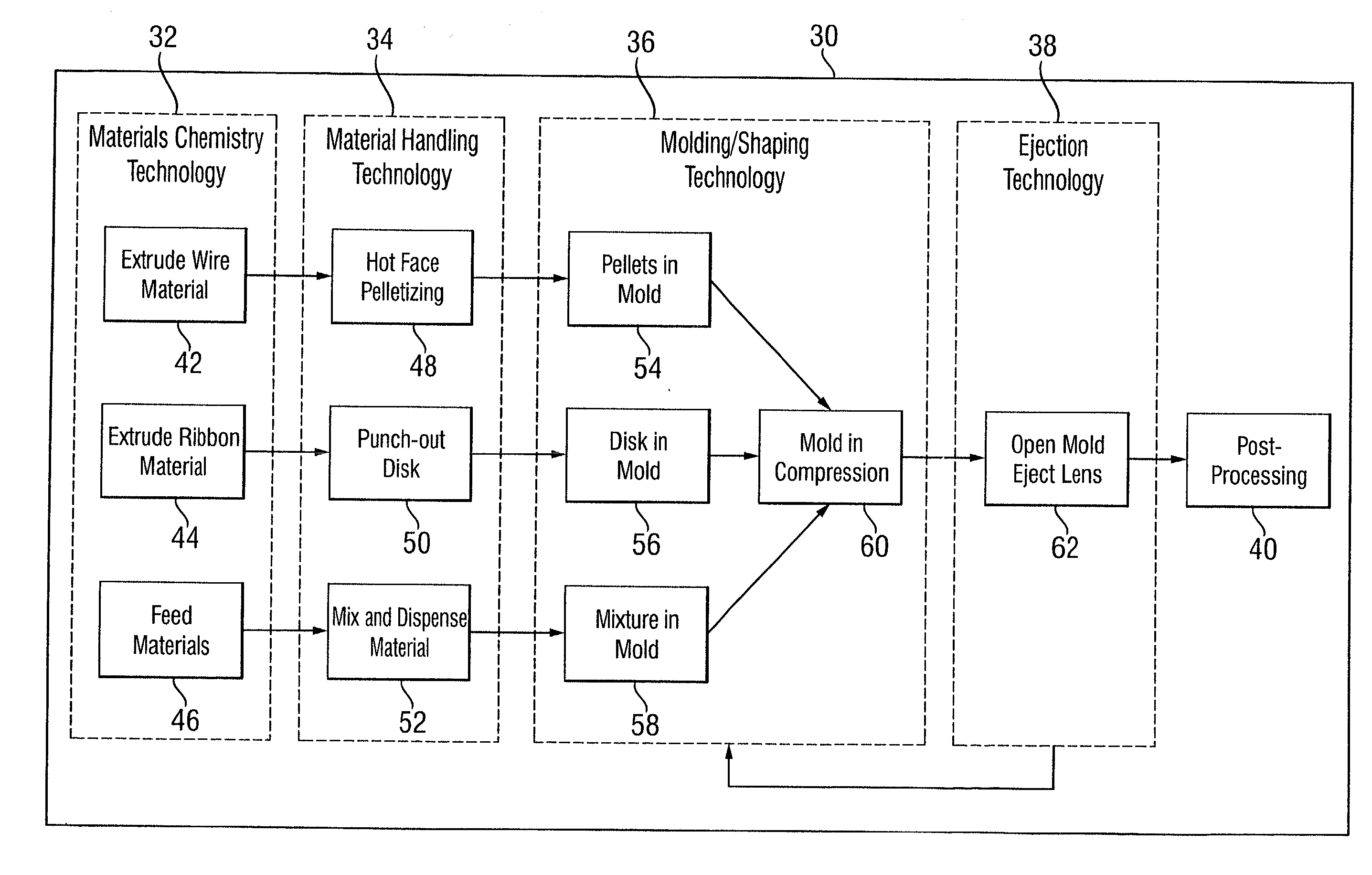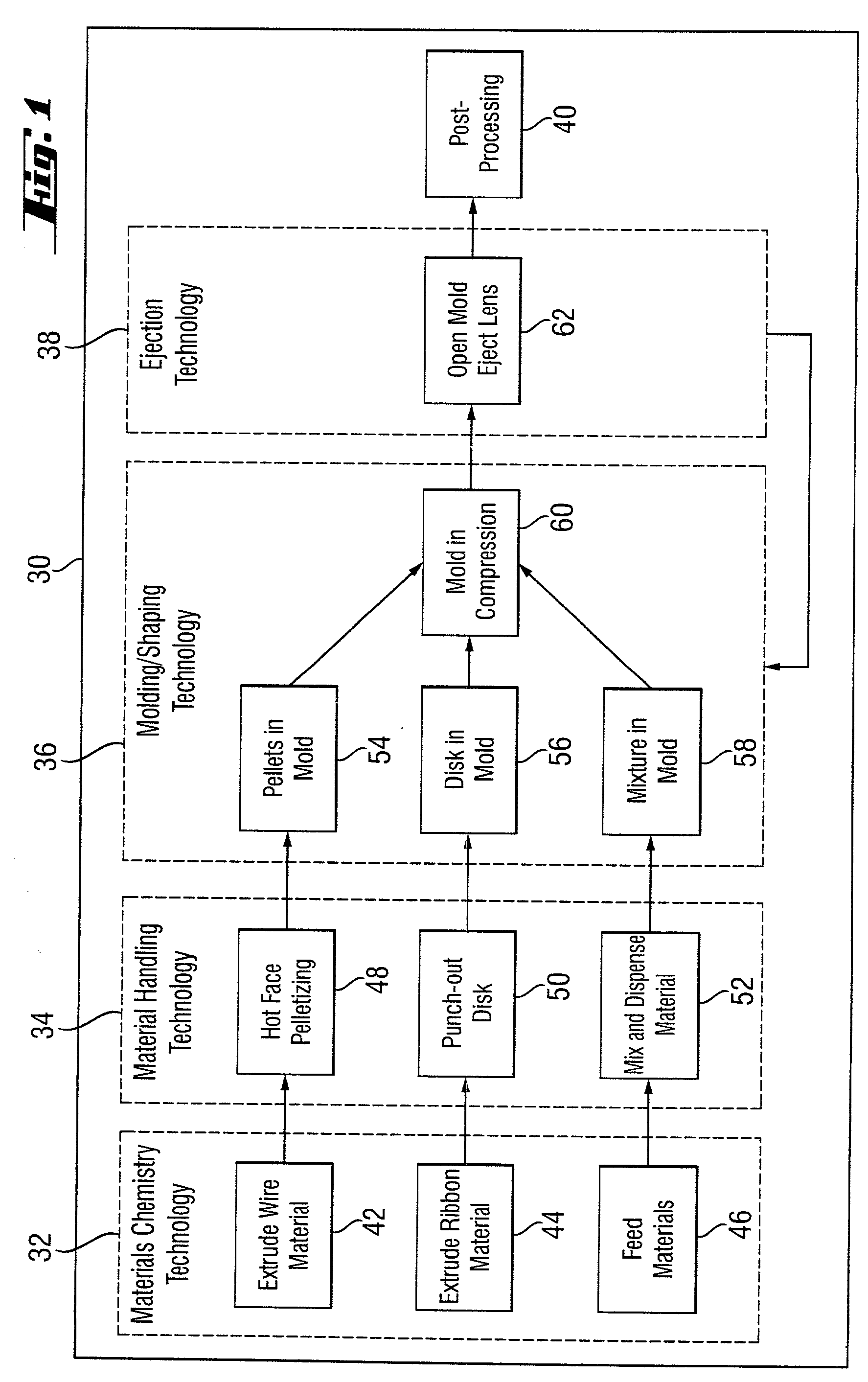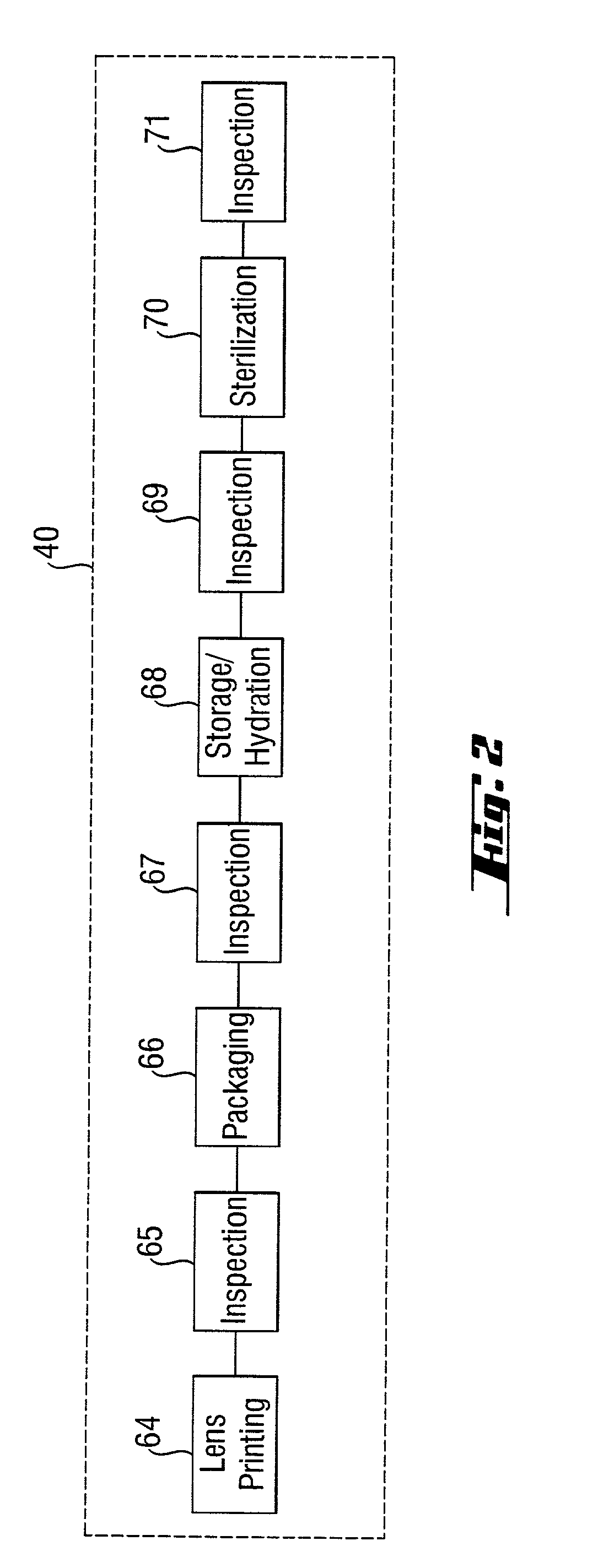Lens manufacturing process
a manufacturing process and lens technology, applied in the field of lens manufacturing process, can solve the problems of low overall yield, low quality, low cost, etc., and achieve the effects of high overall yield, high automation, and desirable physical qualities
- Summary
- Abstract
- Description
- Claims
- Application Information
AI Technical Summary
Benefits of technology
Problems solved by technology
Method used
Image
Examples
example no.1
Example No. 1
[0128] A thermoplastic material was used which had been made as follows. To a 500-mL four-neck cylinder flask, equipped with mechanical stirring, reflux condenser, and nitrogen inlet, was charged toluene (180 .mu.L), DMA (64.7 wt %), FX-13 (20 wt %), and DPMS-MA (15 wt %) with Vazo64 (0.3 wt %). The total mass of monomers was 30 g. The solution was purged with nitrogen for 10 minutes, and then was polymerized with thermal initiation at 60 .degree. C. for 20 hours. The polymer was characterized as having a T.sub.g of 104.degree. C. and a weight average molecular weight of 118,000.
[0129] The thermoplastic material was held in a compression mold similar to those illustrated in FIGS. 14-17, having a mold cavity diameter of 14 mm. The temperature of the mold was 175.degree. C., and the applied force was 2 tons. The mold was opened after 5 minutes, with the lens-like object adhered to the base curve. Hydration of the object for 5 minutes produced a contact lens.
example no.2
Example No. 2
[0130] A thermoplastic material was used which had been made as described in Example 1, except using the following monomer proportions: DMA (49.7 wt %), FX-1 3 (20 wt %), and DPMS-MA (30 wt %). The polymer was characterized as having a T.sub.g of 95.degree. C. and a weight average molecular weight of 149,000.
[0131] The thermoplastic material was held in a compression mold having a mold cavity diameter of 14 mm. The temperature of the mold was 175.degree. C., and the material was softened in the mold for 5 minutes. A force of 1 ton was applied for 6 minutes, followed by hydration of the object for 5 minutes to produce a contact lens.
example no.3
Example No. 3
[0132] A thermoplastic material was used which had been made as follows. To a 500-mL four-neck cylinder flask, equipped with mechanical stirring, reflux condenser, and nitrogen inlet, was charged toluene (150 mL), dimethylacrylamide (DMA) (54.5 wt %), FX-13 (20.0 wt %), DPMS-MA (15.0 wt %), and PEGME-MA (10 wt %) with Vazo52 (0.5 wt %). The total mass of monomers was 30 g. The solution was purged with nitrogen for 20 minutes, and then was polymerized with thermal initiation at 45.degree. C. for 20 hours. The branch copolymer was collected and dried. The polymer was characterized as having a T.sub.g of 65 .degree. C. and a weight average molecular weight of 190,000.
[0133] The thermoplastic material (20 mg) was held in a compression mold having a mold cavity diameter of 10 mm. The temperature of the mold was 150.degree. C., and the material was softened in the mold for 30 minutes. The mold was closed, but no force was applied for 5 minutes. A force of 0.2 metric ton was t...
PUM
| Property | Measurement | Unit |
|---|---|---|
| Fraction | aaaaa | aaaaa |
| Fraction | aaaaa | aaaaa |
| Time | aaaaa | aaaaa |
Abstract
Description
Claims
Application Information
 Login to View More
Login to View More - R&D
- Intellectual Property
- Life Sciences
- Materials
- Tech Scout
- Unparalleled Data Quality
- Higher Quality Content
- 60% Fewer Hallucinations
Browse by: Latest US Patents, China's latest patents, Technical Efficacy Thesaurus, Application Domain, Technology Topic, Popular Technical Reports.
© 2025 PatSnap. All rights reserved.Legal|Privacy policy|Modern Slavery Act Transparency Statement|Sitemap|About US| Contact US: help@patsnap.com



